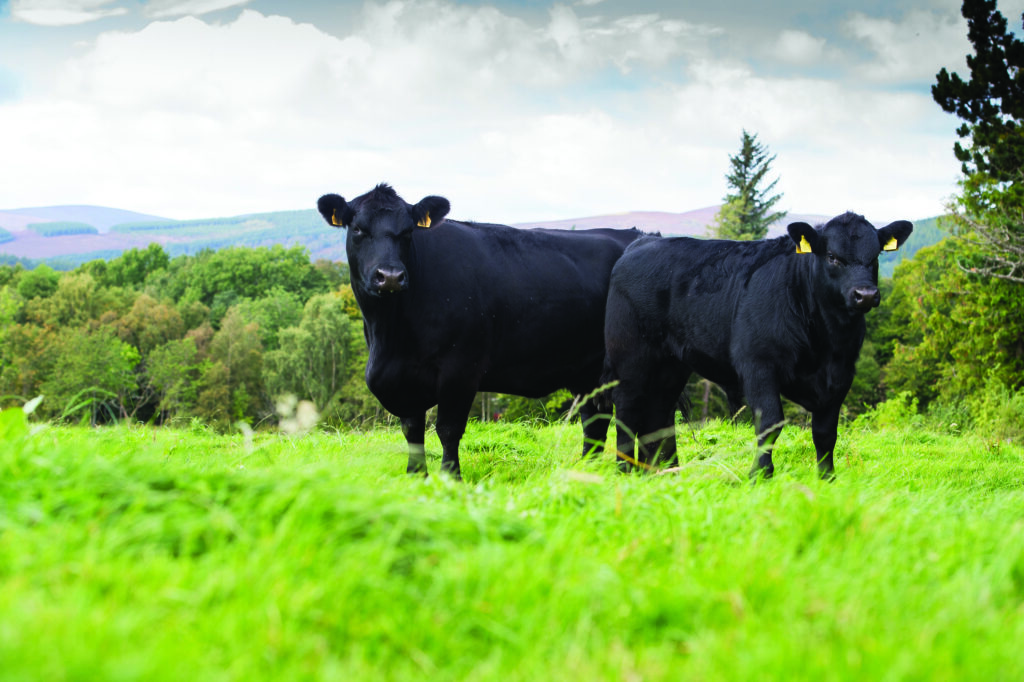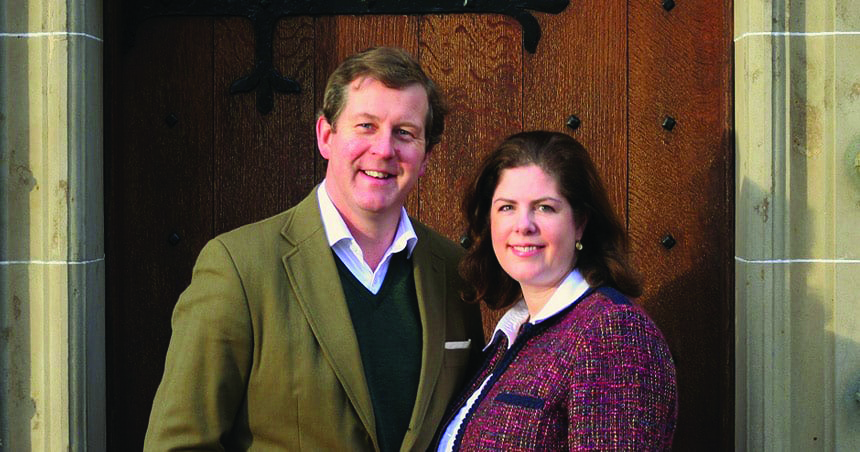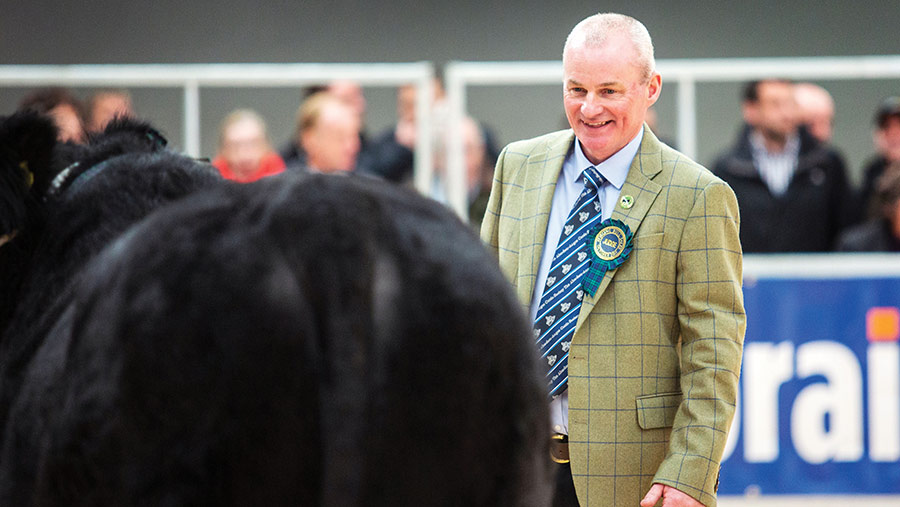How world’s oldest Angus herd thrives in low-cost system
 © The Scottish Farmer
© The Scottish Farmer An unwavering focus on management traits has seen the Ballindalloch Aberdeen Angus herd stand the test of time.
The 35-cow pedigree herd has been a permanent fixture on the 8,907ha (22,000 acre) Ballindalloch estate in Banffshire for the past two centuries.
Estate owner Guy Macpherson-Grant and herd manager David Johnstone believe the breed will be pivotal in helping the estate’s beef enterprise remain commercially viable in the future without subsidies.
See also: How organic beef farmers are benefiting from fermenting muck
The original breeders wanted to create a breed notable for its meat quality and ease of rearing – two features that remain central to its modern-day appeal with both consumers and farmers.
The breed is able to meet consumer specifications and thrive in a grass-based, lower-cost, outdoor system, says Mr Johnstone, who’s been with the Ballindalloch herd since 2008.
Farm facts
- 324ha (800 acres) of upland grazing and 81ha (200 acres) of barley
- Part of the 8,907-ha (22,000-acre) Ballindalloch estate
- 35 pedigree Aberdeen Angus cows
- Producing six to eight bulls for auction and three to four for direct sale to pedigree, commercial and dairy farmers
- 400 breeding ewes: Blackface, Cheviot Mules, Texel Cross and Blackface Mules
- High health herd: risk level one for Johne’s and accredited free of BVD, leptospirosis and IBR
Breeding
The two key aims are to breed easy-fleshing animals and easy-calving cows. They select animals that are not too big and are good on their legs and feet.
“We hope all replacement heifers will turn out to be better cows than their mothers, as we want to keep improving mothering ability in the herd, as well as maintaining the typical beef-producing traits,” says Mr Johnstone.
Breed character also remains important.
“Replacements must have a wide muzzle for eating grass and plenty of width between their eyes – a proper Aberdeen-Angus head – along with a long, level and wide top, as that is where the best cuts of meat come from and what commercial buyers look for.
“We also want them to be good on their legs with plenty of width in their hook bones for easy calving. Our cattle are nice and wide, but not large.”
Bulls are selected by eye first and estimated breeding values (EBV second, with importance placed on calving ease. All calves are back fat-scanned at a year old for Breedplan and the information contributes towards each animal’s EBVs.
Two stock bulls are used at a ratio of one bull per 17 to 18 cows, with good fertility results observed.
A little AI is also used, before the bulls go in with cows in June, to improve genetic merit.

Guy and Victoria Macpherson-Grant © Ballindalloch Castle
Outwintering
Cows are outwintered on straw, and draff from barley used in the estate’s distillery, until eight weeks before calving, when silage is introduced.
They are brought inside for calving, which lasts from mid-March until May, to make management easier, although help is only needed with the occasional difficult birth. Cameras are used to watch the cows without disturbing them.
Cows remain inside on a post-calving diet of silage and draff until mid-May, when they are put out to grass with calves at foot.
Feeding
Cows are grazed on permanent pasture and stocked at two-and-a-half cows and calves/ha (one cow and calf/acre), while younger grass leys are used to make silage.
Calves are introduced to creep feed one month before weaning at seven to eight months of age, to make the process less stressful and to help them adapt to the feed at housing.
They are fed a 16% protein mix and ad-lib silage, with bulls and heifers split at weaning so their diets can be tailored accordingly.
After weaning, the cows are scanned and put on to the rough ground to stop them from getting too fat.
Marketing
Seven heifers are kept as replacements, with another six usually sold to private buyers and a handful going as stores.
The best eight to 10 bull calves are sold for breeding, while the rest will be sold as stores.
“We take six to eight bulls to United Auctions Stirling in both October and February and sell three or four bulls off-farm to pedigree, commercial and dairy farmers,” explains Mr Johnstone.
“We haven’t finished any of our own cattle for a few years now, as we needed more room as the herd expanded. The last cattle that were finished in 2017 were about 700kg and conformation class R,” he adds.

David Johnstone © MacGregor Photography
Future plans
Looking ahead, Mr Johnstone says the farm will reduce its use of inorganic fertiliser on pasture and graze the cattle over more acres to help reduce input costs and introduce natural land management.
“Feed costs are already lowered by using our own draff and home-grown straw, with 200 acres of barley harvested for the distillery. Our biggest challenge in this part of the country is the weather, as the winter can last six and a half to seven months. The Aberdeen-Angus comes into its own here as it’s hardy for out-wintering.”
That, along with the fact the cattle can live off grass all summer and are easy calving, makes him confident about the future of the breed.
“We’re finding there are more commercial farmers looking to change from continental cattle to more native types and we firmly believe our breed suits our end-market needs,” he says.
“It is well suited to a low-cost, low-input system and has maintained the meat-eating quality and flavour that the founders of the breed set out to create. Store cattle can be sold off grass, and there’s a premium paid for pure Aberdeen-Angus beef.
“We’re comfortable with the type of animal we’re producing and look forward to seeing Aberdeen-Angus roam the Castle grounds for another two centuries.”
Herd history
- 1820s: Three farmers – in Aberdeenshire, Angus and Ballindalloch – started selecting animals for type, working separately but with the same focus on meat quality and ease of rearing
- 1860s: Development of the breed was taken up by Sir George Macpherson-Grant on the Ballindalloch Estate
- Today: Guy Macpherson-Grant and herd manager David Johnstone continue to develop the herd
